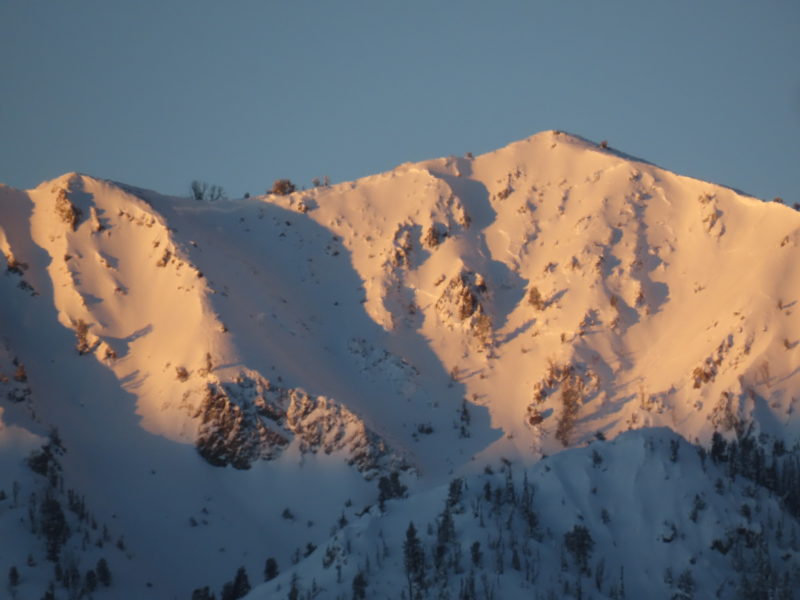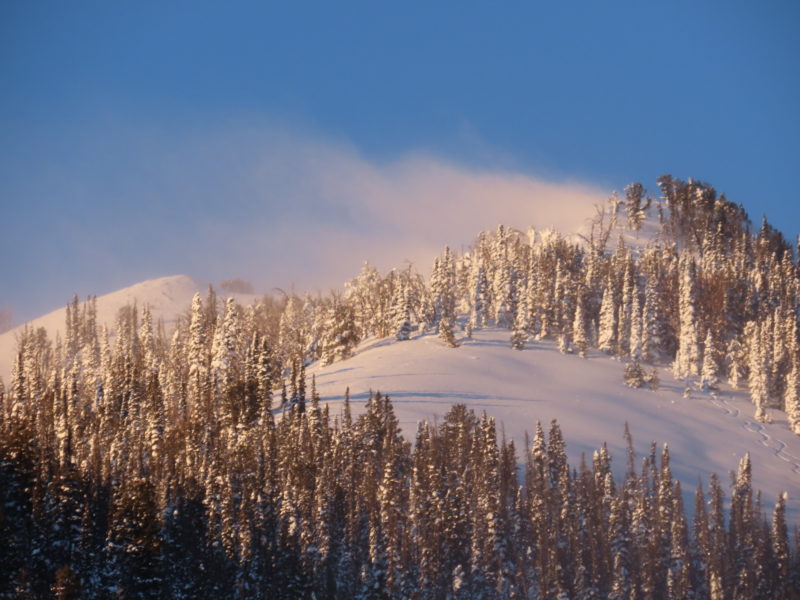Basic Information
Observation Details
Observation Date:
January 1, 2022Submitted:
January 2, 2022Observer:
SAC - VandenBos, Peterson, PetersonZone or Region:
Galena Summit and Eastern MtnsLocation:
Goat/Konrad (6,400-8,000', primarily W-SW-S-SE-E)Signs of Unstable Snow
Recent Avalanches?
None ObservedCracking?
IsolatedCollapsing?
None ExperiencedSnow Stability
Stability Rating:
GoodConfidence in Rating:
LowStability Trend:
ImprovingMedia/Attachments








Advanced Information
Weather Summary
Cloud Cover:
ClearWind:
Light , NWClear and cold all day, with a weak temperature inversion throughout. The day started at -20 according to vehicle thermometer. Winds were observed transporting snow at upper and middle elevations in the morning, but decreased by the afternoon.
Avalanche Observations
| # | Date | Location | Size | Type | Bed Sfc | Depth | Trigger | Photos | Details |
|---|---|---|---|---|---|---|---|---|---|
| 1 |
Dec 31, 2021 (+/- 3 days) |
Eureka Peak SE 9600ft |
D2.5 | SS-Soft Slab | N-Natural |

|
Report |
I observed the reported avalanches while glassing in the morning before our tour.
Snowpack Observations
We were continuing the hunt for weak layers in the upper snowpack, and came up empty. Despite my previous obs and recently reported findings of buried SH and FCsf +/- crusts in nearby terrain, we did not find either. These layers are out there, but their distribution appears to be a bit spotty. With that said, I'd imagine that these layers will be reactive once loaded, where they exist. As my dad says, "Elk are where you find them." Dug on SW at 7,000' (HS=90cm), SE at 7,500' (HE=90cm), and WNW at 7,800' (110cm). I also did not see much evidence of the fainter weak layer I've been seeing down 10-15cm.
Snow surface had faceted significantly in the past 24 hours. Steeper solars (>32, S-SW) were taking a crust by the end of the day. I suspect this was a radiation recrystallization crust but I didn't observe this directly. Either way, I expect this crust+facet combo will be the next player in the weak layer game (probably end up being 1/3 ).
We found thin wind slabs in exposed terrain in middle elevations, These slabs were thin (less than 10cm, stubborn and isolated.
Avalanche Problems
We did not directly encounter any avalanche problems in our tour today, but were looking out for persistent weak layers in the middle of the snowpack (near interface between our two major storms).
Terrain Use
Our tour did not take us into much avalanche terrain, but we would have been comfortable selectively entering a fair amount of avalanche terrain that held snowpack like we observed today. However, the irregular distribution would have given us pause, and confidence that upper snowpack weak layers did not exist would have been hard to come by.
